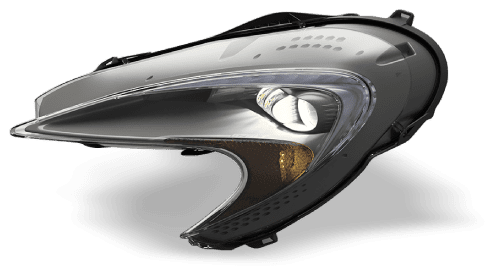
Common Install Mistakes That Reduce LED Light Efficiency

Light-emitting diode (LED) technology offers exceptional energy efficiency, extended lifespan, and superior illumination quality compared to incandescent and fluorescent alternatives. However, the full potential of LED lighting for vehicles depends entirely on the quality of the installation.
Poor installation techniques can reduce LED efficiency, compromise system longevity, and create safety hazards. Professional installers and DIY enthusiasts alike must understand the critical factors that influence LED performance. Examine the most common install mistakes that reduce LED efficiency so you can avoid frustrating missteps with your vehicle.
Overlooking Compatibility Challenges With Existing Systems
Many LED installation failures stem from compatibility issues between new LED components and existing electrical infrastructure. Traditional lighting circuits are commonly designed for incandescent and fluorescent loads, which have different electrical characteristics than LED systems. These differences can cause performance problems when you install LEDs without considering system compatibility.
Installing LEDs without accounting for these differences can lead to issues such as flickering, inconsistent brightness, or complete failure. Fixture compatibility is another critical consideration. LED retrofits must account for mounting requirements, heat dissipation needs, and optical characteristics. Simply replacing traditional bulbs with LED equivalents without considering fixture design can result in poor light distribution, overheating, and reduced system efficiency.
Encountering Electrical Connection Problems
Electrical connections are fundamental to LED system performance in vehicles. Poor connections create resistance that reduces voltage delivered to LED components, directly impacting light output and efficiency. Loose connections generate heat that can damage components. Connection methods must account for LED-specific requirements. Traditional fixtures in your vehicle may not provide adequate connection security for low-voltage LED systems. Luckily, specialized connectors sustain electrical contact that keeps the system functional.
Additionally, using the wrong drivers can cause electrical issues. LED drivers send current to the lights. By addressing these electrical compatibility challenges with purpose-designed solutions, automotive LED systems can operate optimally without introducing complexity or technical problems.
One of the best ways to avoid mismatching LEDs to your vehicle is by opting for OEM parts that match your car or truck model. For example, at J.W. Speaker, we have LED lights for trucks that are easy to customize in collaboration with original equipment manufacturers (OEMs). This makes it easy to find the perfect fit for your vehicle model.

Causing Thermal Management Failures
Heat management is crucial for LED performance and longevity. While LEDs generate less heat than incandescent bulbs, they are more sensitive to temperature increases. Excessive heat reduces LED efficiency, shifts color temperature, and accelerates component degradation. Thermal management supports consistent performance and maximum lifespan.
Inadequate ventilation around LED fixtures causes heat buildup that alters light output. LEDs in enclosed fixtures without adequate airflow experience thermal stress that reduces efficiency and shortens operational life. The semiconductor junction temperature must remain within manufacturer specifications for optimal performance.
Heat sink design and installation also influence LED thermal performance. Undersized heat sinks cannot adequately dissipate the thermal energy generated by high-power LEDs. Improper heat sink mounting creates thermal barriers that prevent efficient heat transfer. These conditions force LEDs to operate at elevated temperatures that compromise efficiency and reliability.
You must consider ambient temperature conditions during LED installation planning. High-temperature environments require enhanced cooling solutions and careful component selection. LEDs need appropriate thermal protection to maintain performance standards.
Mishandling Voltage Regulation Requirements
One of the most common install mistakes that reduces LED efficiency is overlooking voltage details. LED systems require precise voltage regulation to maintain reliable performance. Voltage variations impact LED efficiency and color consistency. Voltage management ensures stable operation and prevents component damage.
Driver selection must match LED voltage and current requirements exactly. Overvoltage conditions force excessive current through LED semiconductors, causing rapid degradation and potential failure. Undervoltage conditions reduce light output and can cause color temperature shifts that affect lighting quality.
Taking care of these details before the installation requires precision and patience, but it’s well worth the effort in the long run. Reinstalling LEDs on your vehicle due to a voltage issue is frustrating yet avoidable. Electrical system evaluation should include voltage measurement under various load conditions. Electrical panels with poor regulation characteristics may not provide the stable power required for optimal LED performance. Fortunately, a professional electrical assessment can identify issues before installation begins.
Neglecting Environmental Factors
Environmental conditions affect LED performance, so you must also consider them during installation planning. Temperature extremes, humidity, vibration, and exposure to chemicals can affect LED efficiency and longevity. In addition, environmental protection ensures reliable operation across diverse conditions. Always choose LED headlights or auxiliary lights that withstand the environment you drive through, whether it’s off-road terrain or extreme temperatures.
Moisture protection is essential for LED installations in humid or wet environments. Water infiltration can cause corrosion, short circuits, and component failure. Appropriate sealing prevents moisture-related problems that compromise system performance.
Dust and debris accumulation on LED surfaces reduces light output and creates thermal barriers that affect cooling. Plan out access for providing maintenance during the installation for long-term performance. Sealed fixtures protect against contamination while maintaining thermal management capabilities. Controlling vibrations, particularly with vehicle lighting, requires specialized LED mounting systems. Mounting prevents connection failures and component damage that reduce system efficiency.

Maximizing LED System Performance
Successful LED installation requires careful attention to compatibility, thermal management, electrical connections, voltage regulation, and environmental factors. Professional installation guarantees that LED systems meet their full performance potential. Planning and component selection prevent the common mistakes that reduce LED effectiveness.
Understanding LED-specific requirements enables installers to avoid compatibility issues and create systems that operate at peak efficiency. Investment in quality components and professional installation techniques pays dividends through improved performance and extended system life.
Regular maintenance and monitoring support optimal performance throughout the LED system lifecycle. Thermal management, electrical connections, and environmental protection require ongoing attention to get the best results. Plus, implementing high-quality LED drivers ensures seamless integration and long-term reliability.
Now is the time to transition to smarter, more efficient lighting solutions! Whether you’re upgrading your personal vehicle or innovating in the automotive industry, invest in cutting-edge LED technology that drives the future of lighting.


